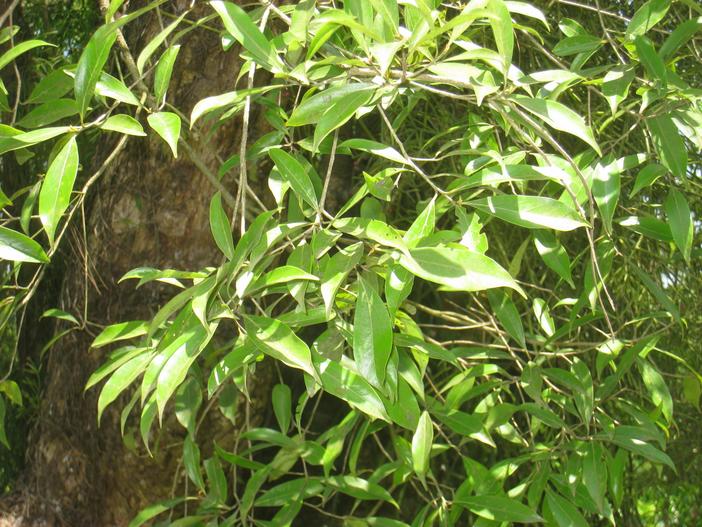Brazilian Walnut
(Ocotea porosa)
Brazilian Walnut (Ocotea porosa)
/
/

Daderot
Public domain
Image By:
Daderot
Recorded By:
Copyright:
Public domain
Copyright Notice:
Photo by: Daderot | License Type: Public domain | License URL: https://creativecommons.org/public-domain/ | Uploader: Daderot | Publisher: Wikipedia Commons













Estimated Native Range
Summary
Ocotea porosa, commonly known as Brazilian Walnut or Imbuia, is an evergreen tree native to the Atlantic Forest biome of Southern Brazil, as well as parts of Paraguay and Uruguay. It can reach up to 40 meters in height and 1.8 meters in trunk diameter, with a dense, rounded canopy. The tree’s bark is dark and fissured, and it produces inconspicuous yellow-green flowers followed by small, purple-black fruit. Brazilian Walnut is highly valued for its beautiful, dark, and fragrant wood, which carries a spicy scent reminiscent of nutmeg and cinnamon.
Brazilian Walnut is sought after for its durable and attractive timber, which is used in high-end furniture, decorative veneers, and flooring. It is also appreciated in landscaping for its stately appearance and shade-providing canopy. While it is not commonly grown in home gardens due to its large size, it is a popular choice for botanical gardens and large estates in subtropical regions. The tree prefers full sun to partial shade, consistent moisture, and well-drained soils. It is relatively slow-growing and requires space to develop its broad form.CC BY-SA 4.0
Brazilian Walnut is sought after for its durable and attractive timber, which is used in high-end furniture, decorative veneers, and flooring. It is also appreciated in landscaping for its stately appearance and shade-providing canopy. While it is not commonly grown in home gardens due to its large size, it is a popular choice for botanical gardens and large estates in subtropical regions. The tree prefers full sun to partial shade, consistent moisture, and well-drained soils. It is relatively slow-growing and requires space to develop its broad form.CC BY-SA 4.0
Plant Description
- Plant Type: Tree
- Height: 45-60 feet
- Width: 20-32 feet
- Growth Rate: Slow
- Flower Color: N/A
- Flowering Season: Summer
- Leaf Retention: Deciduous
Growth Requirements
- Sun: Full Sun
- Water: Medium
- Drainage: Medium
Common Uses
Edible*Disclaimer: Easyscape's listed plant edibility is for informational use. Always verify the safety and proper identification of any plant before consumption., Low Maintenance
Natural Habitat
Atlantic Forest biome of Southern Brazil, Paraguay, and Uruguay
Other Names
Common Names: Imbuia, Imbuia, Canela-Imbuia, Embuia, Umbuia
Scientific Names: , Ocotea porosa, Phoebe porosa, Nectandra dubia, Oreodaphne porosa, Cinnamomum porosum, Nectandra speciosa,
GBIF Accepted Name: Ocotea porosa (Mez) Barroso